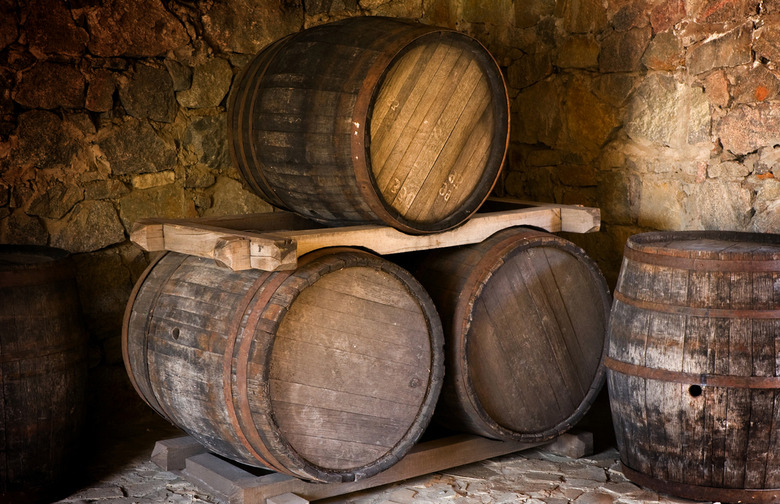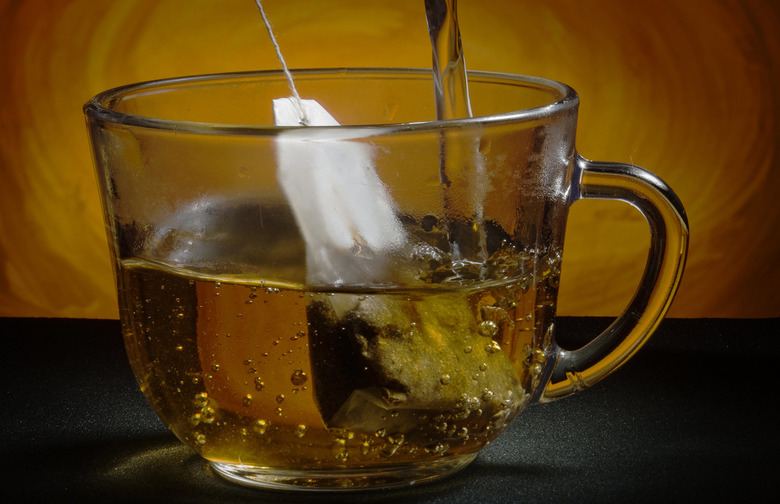The 8 Drink Inventions We Could Never Do Without Slideshow
The invention of refrigeration changed what (and how) we drink forever. After all, what's a good glass of milk to you without a fridge? Before the refrigerator, it was common practice to keep food and drinks cool with things like chilly streams, stockpiled ice or snow, and later, ice boxes, which became popular in the 19th century. Various vapor-compression and gas-absorption refrigeration systems soon followed, but German engineer Carl von Linde is often credited with developing the first modern-style refrigerator, which he patented in 1877. The first electric home refrigerator was sold around 1915, and by 1920, there were some 200 models on the market. Refrigeration has changed the way drinks are packed and shipped, and of course the way we shop and drink.
Cork
Before synthetic corks and screw caps, there was the cork. Often the very tricky barrier for when you need that glass of wine right this second, it's essential to the taste, and storage, of wine. As we've said before, cork is the outer layer of Quercus suber, the cork oak, a tree widely found in Portugal (which produces more than half of the world's cork) and around the Mediterranean basin. The cork, first widely used beginning in the 1700s, creates a perfect barrier between liquids and air. And fun fact: the first corkscrew, which arrived around the same time (fortunately), was apparently inspired by the gun worm, a device designed to extract bullets from rifle barrels.
Fruit Press
Well, someone had to figure out how to get the wine out of grapes. The first presses for these purposes were apparently beams with platforms on one end onto which heavy stones could be loaded. The screw press, dating from around the third or fourth century A.D., was a major improvement; it could be turned by man or beast with a lot less energy than hefting big rocks around required. Today, of course, electricity is involved — but the basic idea remains the same.
Coffee Maker
What would we have done without the original coffee maker? As we noted in our story of the 50 most important food and drink inventions, the earliest example may have been the hourglass-like vacuum-brewer, developed in the mid-1800s; and then the electric percolator was patented in 1889. And before the Mr. Coffee-sort of coffee makers were popularized (first sold for home use in 1972), coffee was often made on stovetops. And with it came the invention of espresso machine (the original was invented in 1901), and then the fancy brewing techniques third wave coffee shops use today. Without the coffee maker, we may have never discovered the joy of a good cup of coffee (or caffeine).
Barrels
Without barrels, we may have never understood just how great a wine or aged spirit could be. As we've noted before, it was the French (OK, the Gauls) who may have made the first wooden barrels, figuring out how to heat and bend staves of wood and bind them into pot-bellied form with rope and later metal bands. The Romans then adopted the idea, finding barrels a great improvement over the clay pots and amphorae they had been using for wine, oil, and other substances (they were bigger and more stable, and didn't have to be sealed with resin). Barrels turned out to be ideal for storing and shipping everything from wine and whiskey to pickles, olives (and their oil), herring, and cured pork. And of course, now barrels play a big part in the flavor of a wine or spirit; different woods and aging times greatly changes how it may taste.
Coca-Cola
How could we not include the invention of Coca-Cola on our list? Arguably the drink that changed Americans' drinking choices, sugar cravings, and waistlines forever, the Coke syrup was invented by John Pemberton (aka "Doc"), a pharmacist, as the popularity of soda fountains grew. His business partner, Frank M. Robinson, created the cursive logo we all recognize today and the slogan, "The Pause That Refreshes." After Pemberton died, Asa Griggs Candler took over the business and catapulted the drink into the hands of thirsty Atlanta residents; from there, the drink exploded. It's incredible to think that the first year Coca-Cola was sold, 1886, only nine drinks were sold per day, compared to the millions upon millions in sales today. Without Coke, we may never have had Diet Coke, Mountain Dew, Sprite, Surge... and all the other sugary drinks out there.
Straw
No seriously — straws were disastrous back before the modern straws we know today were invented in the 1880s. Marvin Stone, the inventor, apparently was not enjoying his mint julep the way he wanted to with his rye natural grass straw (seriously, can you imagine using grass to slurp up a drink?). Instead, he decided to invent a cylindrical vessel made of paper and coated in paraffin. Then came the flexible straws made for milkshakes (during the soda fountain boom), and finally, the bendy straw. Seriously — how else would we have enjoyed milkshakes without a straw?
Tea Bag
Tea itself was already a very beloved drink in England when the British crossed the seas to the New World. But it wasn't until 1908 that an American tea merchant, Thomas Sullivan, began sending samples of his tea to customers in small silken bags. And because no one really knew what to do with those bags, people ended up sticking them in boiling water — hence, the tea bag we know today. Sullivan soon began making his teas into small sachets, as tea bags were known through the 1920s, and then later made into paper bags. Interestingly, the British didn't adapt to tea bags until the 1950s, partly because of the materials shortage during World War II, and partly because well, they snubbed their noses at it. Tea bags helped revolutionize, and simplify, the art of a cup of tea for Western countries.







